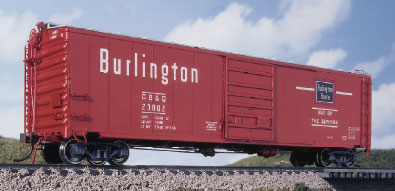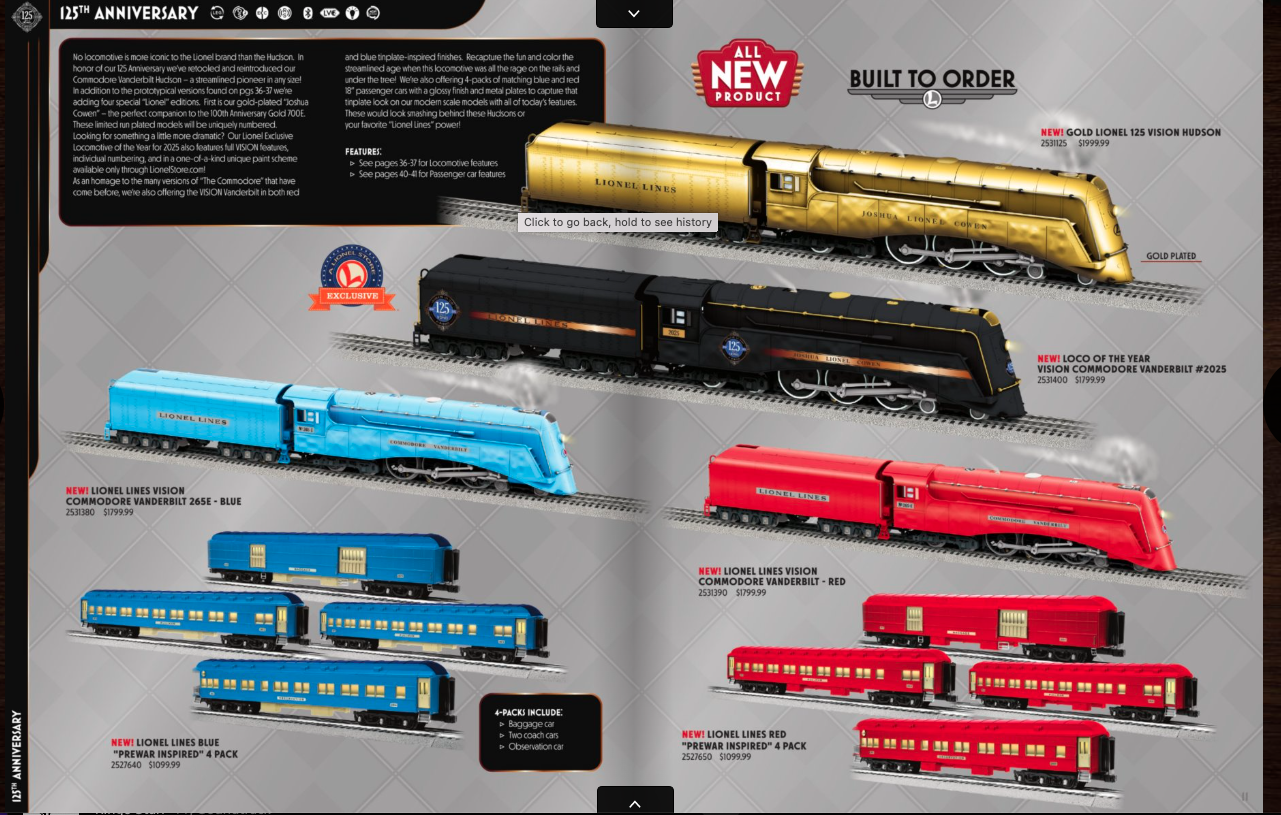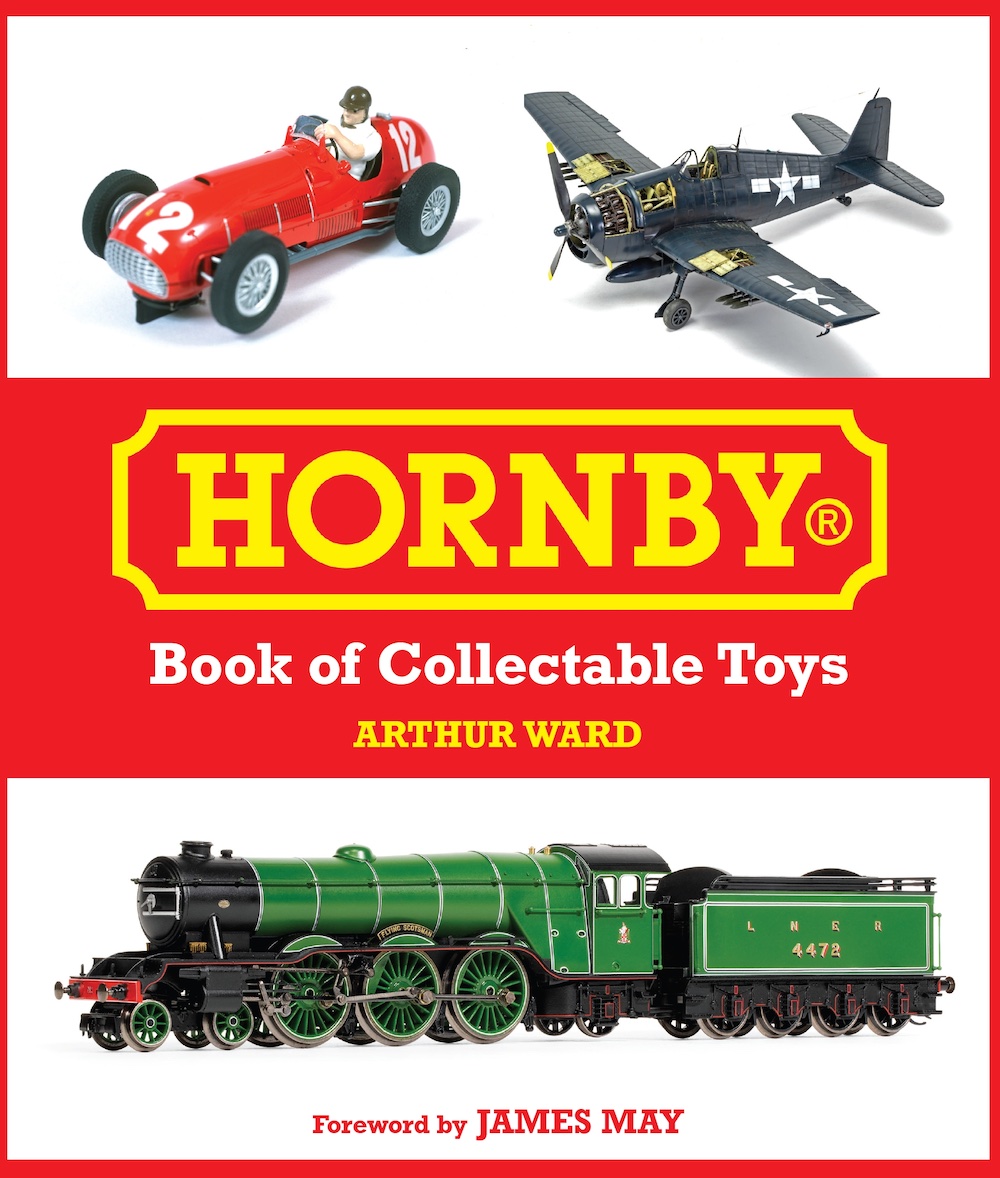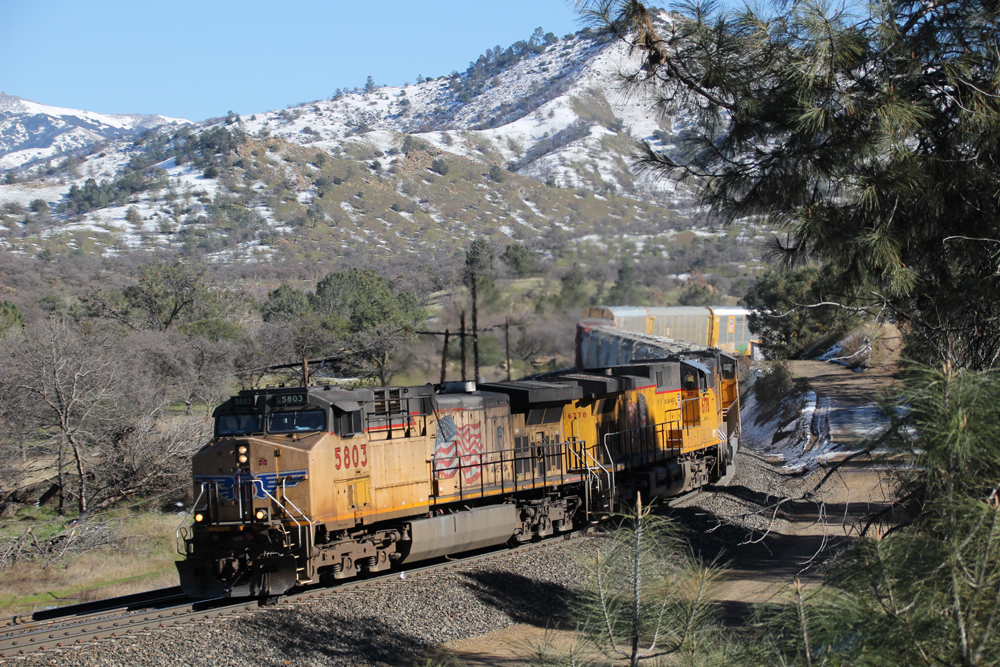The Branchline model is based on the AAR standard 50-ton, 50′-6″ boxcar, which was based on a design introduced in 1942. Although World War II slowed production of these cars, thousands of similar cars were built through the 1950s. Although the cars were constructed to basically the same design, several options were offered depending on the intended service. Since production of the basic design went on for so long several changes were made, so roof styles, ends, side sills, and doors varied over time and from railroad to railroad.
The standard design featured 16-panel (8/8, for eight panels on each side of the door opening) riveted sides with an eight-foot door opening for merchandise boxcars. The automobile car version of the car featured 5/8 riveted sides with a 15-foot door opening covered with a set of two doors. All told more than 9,000 cars were built for 16 railroads to this basic design between 1950 and 1960. The November 1998 issue of RailModel Journal contains a detailed article on the 50-foot AAR cars.
Branchline intends to offer every major variation of the car with paint and lettering schemes accurate for each version. Undecorated models include all the extra parts to allow modelers to build the version of the car they choose.
The first versions to hit the streets are the single-door cars. The models feature the so-called R+¾ improved Dreadnaught end, the type found on the majority of 50-foot AAR cars built in the 1940s and ’50s. The car has a diagonal-panel roof, the most common style found on these cars.
Despite tremendous advances in freight car modeling in recent years, this kit takes things a step further. Let’s start with the packaging. When you find these cars on your dealer’s shelves you’ll notice the labels describe the contents of the kit, including the year the car was built and, if appropriate, the year it was repainted into the scheme found on the car in the box. For example, our Chicago, Burlington & Quincy car was, according to the label, built in 1955 and repainted into the Chinese Red scheme in 1958.
The kit isn’t difficult to build. Before starting construction I armed myself with the usual assortment of tools including a sharp hobby knife, despruing nippers, liquid plastic cement and a small paintbrush (for applying the cement), and pin vise with nos. 61 and 75 drill bits.
The instructions are well laid out and straightforward, although a few of the smaller photos are difficult to decipher. All the parts fit with a minimum of fuss, although the paint had sealed some of the smaller holes slightly. I used a no. 75 drill bit to clear these out before installing the parts.
There are three sprues of small detail parts. Be sure to use care in removing these extremely delicate parts from the sprue. A despruing nipper is the easiest way to do this, although a sharp hobby knife will also work.
Following the instructions I had the car assembled and on the rails in less than 90 minutes. Now that I’m familiar with the parts and assembly sequence I’m sure my next car will go together in well under an hour.
The assembled car weighs 4.5 ounces, right on the National Model Railroad Association’s recommended practice for a 50-foot car. The car weights are included in the kit-a pair of lug nuts to be located over the trucks. I held these in place with short pieces of double-sided foam tape.
The die work on the model is quite impressive, with fine cross-sections on many parts. The finished model matched drawings of the prototype car which appeared in the 1953 edition of the Car Builder’s Cyclopedia (Simmons-Boardman). The running board is even see-through in the section that overhangs the end of the car. A nice finishing touch is the finest plastic uncoupling lever I’ve ever seen on an HO model. I only wish there were a couple of extras in the kit that I could use on some of my other cars!
The model includes metal wheelsets with one-piece injection-molded trucks and knuckle couplers. The wheelsets were all in gauge according to the NMRA standards gauge, and the coupler height matched a Kadee coupler height gauge.
Not many batters hit a home run their first time at the plate, and not many model railroad manufacturers score with a hit product their first time out. Branchline has done that with this car. I can’t wait for the other variations of the 50-foot car, as well as the firm’s 40-foot car, which should be along soon.
Price: $12.95
Manufacturer:
Branchline Trains
333 Park Ave.
East Hartford, CT 06108
www.branchline-trains.com
Description:
Injection molded plastic kit with metal wheelsets
Road names:
Atchison, Topeka & Santa Fe
Baltimore & Ohio
Chesapeake & Ohio (black)
Chicago & Eastern Illinois
Chicago, Burlington & Quincy (Chinese Red)
Chicago, Rock Island & Pacific
Erie
Erie Lackawanna
GAEX
Grand Trunk Western (wafer)
Illinois Central
Lehigh Valley
Maine Central
Milwaukee Road
Missouri-Kansas-Texas
Monon
New York Central
New York Central (Peoria & Eastern)
Northern Pacific (red)
Northern Pacific (green)
Pennsylvania RR
Texas & Pacific
Wabash
Western Maryland

















